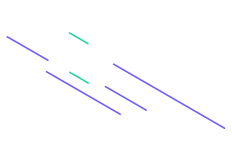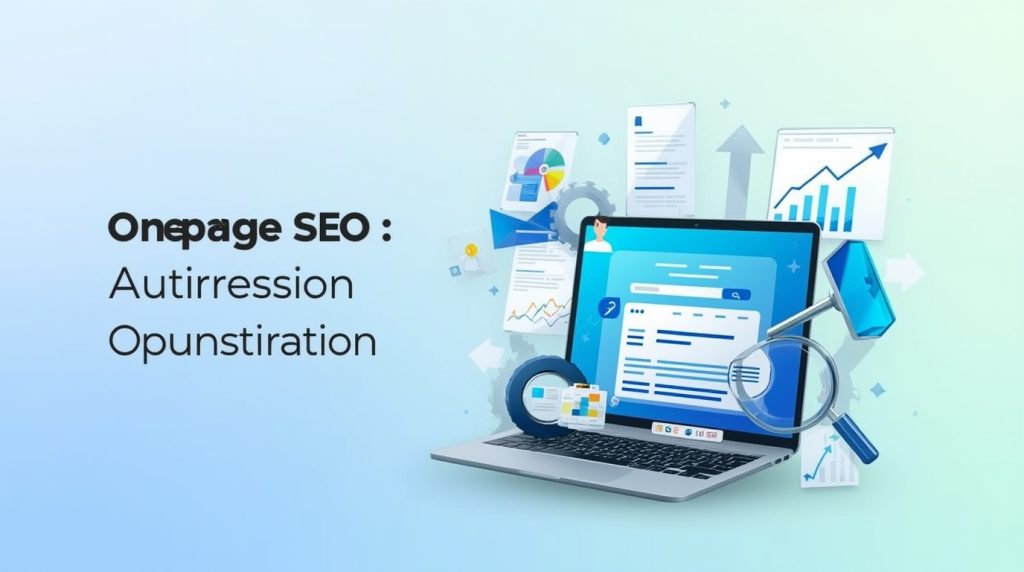One Page SEO (also known as On-Page SEO) is all about optimizing individual web pages to rank higher and earn more relevant traffic in search engines. Whether you’re writing a blog post, a product page, or a service landing page—this guide will show you how to make every part of your content search-engine friendly.
🔍 What Is One Page SEO?
One Page SEO involves optimizing both the content and the HTML source code of a page. Unlike Off-Page SEO (like backlinks), this method is fully in your control—and it’s essential for ranking on Google.
🧱 Core Elements of One Page SEO
Here are the key elements you should focus on to improve your on-page SEO:
1. 🎯 Keyword Research and Placement
Choose one primary keyword and a few related keywords (LSI keywords).
-
Use tools like Google Keyword Planner, Ubersuggest, or Ahrefs.
-
Place your main keyword in:
-
Title
-
URL
-
First 100 words
-
Meta description
-
Headings (H1, H2)
-
Image ALT text
-
2. 🏷️ Title Tag (H1)
Make sure your title tag:
-
Is unique and includes your main keyword
-
Is between 50–60 characters
-
Encourages clicks (use power words like “best”, “guide”, “how to”)
Example:
✅ One Page SEO: A Complete Beginner’s Guide for 2025
3. 📝 Meta Description
Though not a direct ranking factor, meta descriptions improve click-through rate (CTR).
Tips:
-
Include your keyword naturally
-
Keep it under 160 characters
-
Add a clear value proposition
Example:
“Learn how to optimize your content with One Page SEO techniques to boost your Google rankings and attract more traffic.”
4. 🔗 SEO-Friendly URL
Your page URL should be:
-
Short and descriptive
-
Keyword-rich
-
Free of unnecessary words
Example:
✅ yourdomain.com/one-page-seo-guide
5. 📋 Proper Use of Headings (H1–H6)
Break your content into clear sections using heading tags:
-
H1 for the main title (only one per page)
-
H2s for major sections
-
H3s for sub-points within H2s
6. 🧠 High-Quality, Keyword-Rich Content
Write helpful, original content that covers the topic deeply:
-
Use your target keyword naturally (don’t keyword-stuff)
-
Answer related questions (use People Also Ask from Google)
-
Aim for 800–2,000 words (depending on the topic)
7. 🖼️ Image Optimization
-
Compress images to improve page speed
-
Add descriptive ALT text (with keywords)
-
Use relevant file names (e.g.,
one-page-seo-tips.jpg)
8. 🔗 Internal & External Links
-
Link to other relevant pages on your site (internal linking)
-
Link to high-authority external sources to back your claims
9. 📱 Mobile-Friendliness
Use a responsive design that adapts to all devices. Google prioritizes mobile usability in its rankings.
10. ⚡ Page Speed Optimization
Improve loading time with:
-
Caching plugins
-
Compressed images
-
Lightweight themes
-
Minimal plugins
11. 📊 Schema Markup (Bonus)
Add structured data (Schema) to enhance your visibility with rich results (like FAQs or product reviews).
🔄 One Page SEO Checklist
✅ Target keyword in title, URL, and meta description
✅ Proper heading structure (H1, H2, H3)
✅ Internal & external links
✅ Optimized images (with ALT tags)
✅ Mobile-friendly layout
✅ Fast page load time
✅ Schema markup (optional but powerful)
🧠 Final Thoughts
One Page SEO is the foundation of your search engine strategy. It ensures your content is discoverable, user-friendly, and authoritative. Even if you get backlinks or run ads, if your page isn’t properly optimized, you’re leaving traffic and rankings on the table.
Focus on the basics done right—and your site will climb the search rankings naturally.









